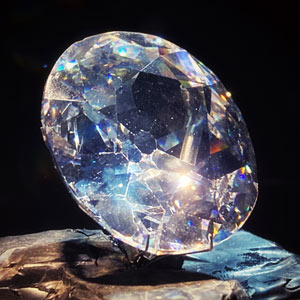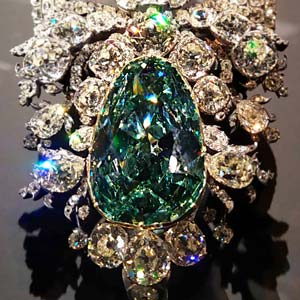diamond
Diamonds, often called "the king of gemstones," derive their name from the Greek word "adamas," which means unconquerable or indestructible. Composed of pure carbon, diamonds are the hardest known natural material on Earth, making them a symbol of enduring strength.
Diamonds form deep within the Earth's mantle under high pressure and temperature conditions. Volcanic eruptions carry these precious gems to the surface, where they are discovered in kimberlite and lamproite pipes.
The chemical composition of diamonds is simple yet remarkable—each carbon atom forms four strong covalent bonds with surrounding carbon atoms in a tetrahedral arrangement.
Apart from their exquisite beauty, diamonds possess unique properties. They disperse light into a dazzling display of colours known as fire, and their hardness makes them ideal for cutting and polishing other gemstones.
Interestingly, diamonds are not just a symbol of love but also have practical uses, such as in industrial cutting and drilling tools. These multifaceted gems continue to capture hearts and minds, representing rarity, resilience, and eternal beauty.
Click on the terms in the table below to discover their meaning



Click on the terms in the table below to discover their meaning
| Name | Diamond |
|---|---|
| Category | Native mineral |
| Chemical Formula | C |
| IMA Symbol | Dia |
| Crystal System | Cubic (Isometric) |
| Crystal Habit | Commonly octahedral; also dodecahedral, tetrahedral, and cubic; curved and striated faces common; spherical, with internal radial structure |
| Twinning | Contact twins or penetration twins |
| Cleavage | Perfect |
| Fracture | Conchoidal |
| Tenacity | Brittle |
| Hardness (Moh's Scale) |
10 (defining mineral) |
| Specific Gravity | 3.511 |
| Diaphaneity | Transparent to translucent |
| Colour | Colourless, pale yellow to deep yellow, brown, white, blue-white; less commonly in oranges, pinks, greens, blues, reds, grey to black |
| Streak | None (harder than streak plate) |
| Lustre | Adamantine |
| Optical Class | Isotropic |
| Refractive index | n = 2.417 - 2.419 |
| Birefringence | Absent |
| Dispersion | Rd = 0.044 |
| Pleochroism | Absent |
| Clarity | Type I but has own clarity grading system |
| Notable Varieties | White diamond, blue diamond, pink diamond |
References
Mineralogical Society of America. (2005). Diamond. In J. W. Anthony, R. A. Bideaux, K. W. Bladh, & M. C. Nichols (Eds.), Handbook of Mineralogy. Chantilly, VA 20151-1110, USA: Mineralogical Society of America. Retrieved from https://
The Gemology Project. (2010, October 7). Diamond. Retrieved from The Gemology Project: http://